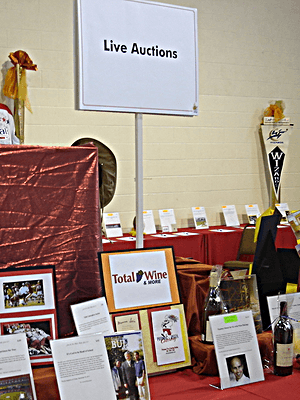
“Sherry, how many live auction items do you recommend we sell in our charity auction?”
I hear this question regularly and contemplate it in the same way I’d think about prunes: “Will three get the job done? … Is eight too many?” 😉
Here’s what I’ve learned: If the gala’s timeline has already been determined, my recommendation doesn’t matter. A specific amount of time … 20 minutes … 45 minutes … 70 minutes … has been allotted. Now I need to work with the client to choose the items because we must match that timeframe.
So now I respond to that question with, “How much time have you set aside for the live auction?”
If they haven’t yet set the timeline, we’ve got flexibility. In that case, we look at other factors, like those below.
As I generally know how long it takes to sell different items, I can develop a timeline. Front-row seats at a high-school graduation will take a different length of time than a private concert with a Grammy award-winner.
By knowing what they have to sell and how much time they’ve allotted, I can tell whether we need to cut the number of auction items — or find more time in the program.
So what’s the perfect number for your gala?
There is no perfect number which works for every group, but here are five points to keep in mind when finding the perfect number of live auction items.
1. Are you using a professional charity auctioneer?
A professional charity auctioneer will be able to sell more items in any given timeframe than someone who is not a professional. We’re in front of people asking for money all the time. We can read faces, and know when to push.
Second, the entire reason “the chant” (the fast talk) was developed was to sell items quickly. Although your charity auctioneer will not chant as quickly at your gala as would be heard at, say, a livestock sale, it does speed the sale along.
2. Do you have good / exciting auction items?
If you’re selling exciting items with a wide-appeal, you can sell more items in the live auction. If you are selling run-of-the-mill items … ordinary baskets, most gift certificates, generic items … you will lose your audience unless you can structure the event to keep them in their seats.
3. Is the crowd standing or sitting?
This is a pretty simple concept. Seated guests will be more comfortable than standing guests, and you can sell more items in the live auction. You can even take this a step further and analyze the comfort of the chairs.
I used to do some marketing work for a church. When planning workshops, we would — I’m not joking — take into consideration the uncomfortable chairs. An all-day workshop was a harder sell because our congregation was familiar with the chair. They wouldn’t pay a higher price for an all-day workshop if they had to sit in uncomfortable chairs all day long.
4. What else will the crowd enjoy (or endure)?
In addition to the live auction, will your guests be seated through 30 minutes of presentations? Or a 45-minute choral concert?
Maybe you’ve heard this phrase: The mind can stand only what the butt can endure.
At some point, we humans need to stand up and walk. In my work, I’ll talk with clients about their schedule. We might move the live auction to a different part of the program once I know the other elements of the gala. I might recommend that the live auction might be the first activity of the program … the last … or somewhere in the middle.
5. What’s your financial goal for the live auction?
Whatever I sell in the live auction will bring in more money than if that same item is sold in the silent auction. Period.
So if there is a specific financial goal to hit in the live auction — and we don’t have the right items or enough items to hit that goal — we need to add auction items.
Your “perfect” number may be adjusted to reach your financial goal. Whether you sell five auction items or forty items, it might be right for your group. Your charity auctioneer will have the perfect number for you.
Leave a Reply